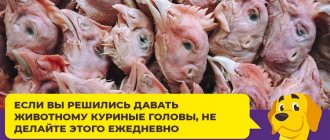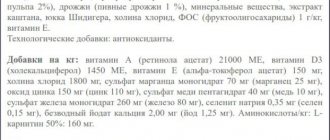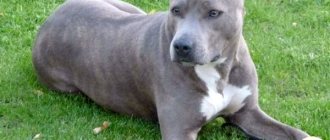Calcium and phosphorus are the main building elements of any organism. It depends on them whether bones and teeth are strong and healthy.
The microelement calcium is urgently needed by both small breed dogs and their larger relatives, especially during periods of intensive growth. Therefore, experts recommend introducing calcium-containing products into the diet of pets. However, you should be aware that the element is poorly absorbed by the body, especially those produced by the pharmaceutical industry for human consumption.
If Your Dog Has Too Much Calcium Symptoms
Some spectacular representatives of large dog breeds are a pleasure to look at. In others, you can often notice unaesthetic deflections of the limbs, which spoil the overall picture. Almost every dog lover will say that these are the consequences of puppy rickets. However, today rickets is a rather rare phenomenon. What's the matter?
It's no secret that a lack of calcium in the body has never benefited anyone. The skeleton is important not only for movement, but also as a protective shell for vulnerable internal organs. The calcium bank is bone, which consists of a very hard “compact” outer part and an inner “marrow” - mainly a protein substance in which, through special cells, calcium coming from the blood accumulates, causing calcification (saturation of the body with calcium). The versatility of the metabolic system allows, if necessary, to return calcium back to the blood, taking it from the bone. However, calcium is needed not only and not so much for the formation and strengthening of bone tissue. The main vital functions of calcium are to ensure the required level of blood clotting and support normal muscle contractility, including the heart. This is why the bones suffer first. However, in connection with calcium balance disorders, the name vitamin D often appears. It really plays an important role in maintaining the balance and redistribution of calcium in the body. When coming with food, calcium from the intestines is absorbed into the blood with the help of parathyroid hormone (parathyroid hormone), the basis of which is vitamin D. Thus, three main causes of imbalance are identified.
Lack or excess of vitamin D.
For a dog, unlike humans and most other animals that are able to synthesize vitamin D under the influence of ultraviolet radiation, its only source is food. A lack of vitamin leads to a lack of parathyroid hormone, as a result of which the level of calcium available for the metabolism of bones and other organs in the blood steadily decreases, which in severe cases leads to very disastrous consequences, even death. The most common symptom of vitamin D deficiency is rickets, which is expressed in lengthening of bones (primarily limbs), thinning, and insufficient mineralization, so that they, being not strong enough, bend under the weight of the body. Naturally, large dogs suffer the most in the first stage of rickets. If emergency measures are not taken, progressive convulsions and muscle spasms will follow. By giving free rein to your imagination, you can predict the ending yourself.
An excess of this vitamin is just as undesirable as a deficiency. It is not excreted from the body, but rather causes a pathological condition, and, as a result, abnormally high calcemia (calcium levels in the blood), which can cause its deposition in the heart and kidneys. You understand what this can lead to. The danger of excess also lies in the fact that while rickets is now a rarity, hypervitaminosis is a very common phenomenon. He lies in wait for the dogs of those inexperienced or illiterate owners who are afraid of “not feeding” their pets, thereby exposing them to even greater danger.
Although dogs belong to the order of predators, this does not mean at all that they should live on meat alone. In nature, a wolf eats its prey entirely - muscles, internal organs, fat, blood, bones. Meat brings enough phosphorus to the body, and no one doubts its necessity. Meat is also the main source of protein, but without offal the carnivore would lack minerals, primarily calcium, sodium, B vitamins and fats if the meat is lean.
Excess calcium.
Just imagine - this happens! Moreover, it is not as easy for a puppy to deal with this as for an adult dog. The matter is aggravated by the fact that puppies actually try to absorb more than necessary, so the level of many substances, including calcium, in their blood is increased compared to the norm. Then a control system intervenes, which promotes the deposition of mineral matter in the bone tissue. However, in order for normal growth to occur, some bone tissue must be demineralized every day. If a puppy or young dog has complete bone mineralization, their growth will simply stop. It should also be especially noted that an excess of vitamin D goes well with a lack of calcium, by no means excluding one another.
Thus, we can once again repeat the well-known truth - only the golden mean walks on healthy paws and lives happily ever after.
Although dogs belong to the order of predators, this does not mean at all that they should live on meat alone. In nature, a wolf eats its prey entirely - muscles, internal organs, fat, blood, bones. Meat brings enough phosphorus to the body, and no one doubts its necessity. Meat is also the main source of protein, but without offal the carnivore would lack minerals, primarily calcium, sodium, B vitamins and fats if the meat is lean.
Symptoms of excess calcium in the body and how to remove it
Calcium is an important chemical element necessary for the human body. The body of an adult contains approximately 2 kg of this element. It participates in the formation of the skeleton, helps blood clot, and also promotes water-salt balance and metabolic processes in the human body. An excess of calcium in the body causes certain symptoms, which we will study today.
Growing children, pregnant women and breastfeeding women especially need calcium. It is very important to maintain the balance of the element in the body. This mineral should not be in excess and should not be lacking.
Calcium is found in dairy products, nuts, grains and peas.
Vitamin K (phylloquinone)
Vitamin K is directly involved in the blood clotting process.
A deficiency of this substance is observed in dogs with intestinal and liver diseases, as well as in puppies that do not receive enough vitamin K from their mother's milk. Vitamin K deficiency is manifested by numerous hemorrhages in the neck, back, sternum and hind limbs.
Spinach and kale contain large amounts of vitamin K
, and the dosage form is
the drug vikasol , treatment of which should be carried out under the supervision of a veterinarian.
Excess calcium in the body
An excess of a mineral in the blood is possible not only because of its consumption above the permitted norm. Excess calcium appears in the body due to disruption of the thyroid gland and the production of a special hormone. An increased element also appears in those people who have been diagnosed with tumors. In addition, possible causes may also be radiation therapy to the neck and shoulder area, and vitamin D poisoning. Excess calcium in the body is most often observed in older people and the female half of the population.
Excess calcium in the body symptoms
If you experience constipation, pain in the lower abdomen, severe weakness, vomiting, cramps and very strong thirst, then such symptoms may indicate excess calcium. Severe dry mouth, very tiredness and disorientation may also occur. If this element has long exceeded its norm, then this can have a detrimental effect on the state of the brain, which is extremely dangerous for human health. Increased concentration in the female body leads to kidney failure, muscles weaken, and pain appears in them. A malfunction in the functioning of these organs can lead to a malfunction in the entire body system, so it is important not to delay the symptoms that arise. This applies to women of all ages, especially pregnant and breastfeeding women.
Scientists have proven that the state of water greatly affects the calcium content in the body. Hard water has a more saturated chemical composition, which can be dangerous if such water and calcium-containing foods and medications are used at the same time. Such water can increase the content of such a chemical element in the body.
This is interesting: The Street Cat's Mouth is Open and Drooling What to Do
Vitamin B3 (pantothenic acid)
Vitamin B3 is the main regulator of the enzyme system of the animal body
. Hypovitaminosis B3 disrupts the activity of the endocrine glands and skin, causing dermatitis, hair loss and loss of brightness of its color, and also leads to pathological changes in the central nervous system.
A diet consisting exclusively of boiled or dry animal feed, as well as gastrointestinal disorders and liver disease are the most common causes of B3 vitamin deficiency. A sufficient amount of riboflavin is contained in yeast, liver and kidneys, as well as corn, wheat bran, and nuts.
In combination with vitamins C and B12, riboflavin is absorbed much better.
How is the treatment carried out?
When the symptoms have already manifested themselves, you need to find out what caused the excess of this element. First of all, you need to seek medical help and undergo appropriate tests, since such symptoms can occur during other diseases.
What removes calcium from the body
Calcium can be removed from the body through water; for this you need to drink a lot, and also take special medications prescribed by your doctor. Seeking medical help is mandatory. Since it is the doctor who can choose the optimal treatment based on the amount of the substance exceeding the norm. The doctor may prescribe the use of diuretics, which will help remove a lot of calcium from the body. One of the means that can increase the normal performance of the human body during illness is dialysis.
As an option, your doctor may suggest surgery. The essence of this procedure is that the parathyroid gland, which could lead the body to a serious condition, is removed. This procedure leads to the fact that all pathologies disappear.
Another treatment option may be taking hormones. They will help not only if there is an overdose of calcium, but also if there is a pathology or hereditary predisposition.
In order not to reduce calcium levels during drug treatment, you also need to know the list of foods that wash the mineral out of the body.
It turns out that such a well-known porridge as oatmeal can remove calcium from the body if consumed more often than once a day.
Alcohol, smoked foods, carbonated drinks and salty foods are also not friendly with this chemical element.
Radiation, excess sugar, and certain medications also affect the level of calcium in the body, so before taking medications prescribed by your doctor, you need to inform him about the medications that are already being used.
All lovers of night gatherings should also be aware that calcium is removed from the body very quickly in this case. An autoimmune disease, an inflammatory process occurring in the body, hormonal imbalances and kidney problems can have the same effect.
How to maintain calcium balance in the body and not suffer from its excess
Unfortunately, diseases are getting younger in our time and osteoporosis, which appears by the age of 40, occurs in 25 year-old inhabitants of the planet. The balance of calcium in the body is quite difficult to maintain due to the low consumption of fermented milk products and the consumption of a large number of foods that can significantly reduce the level of the element in the blood and significantly increase its content.
To maintain an optimal balance that will preserve the functioning of all organs, you need to be careful about your diet and control the amount of foods you consume, which can both lower calcium levels and raise them. This is especially true for products such as sweet drinks, carbonated waters, coffee, tea, and chocolate. Excessive consumption of dairy products can also adversely affect the human body. This is especially true for older people and women, especially if they are prone to constipation and infrequent bowel movements. Cabbage, sorrel, and sardines in oil are a source of calcium; this should not be forgotten if, for example, a person decides to follow a cabbage diet. Distilled water can reduce the content of the element. You should drink it for no more than two weeks. This is due to the fact that such water can remove not only calcium from the body, but also other necessary and vital substances. And it is extremely important that the treatment of one disease does not subsequently cause another disease, which will take a long time to be treated and will require restoration of the lost balance.
In addition, you need to conduct regular medical examinations and replenish the body with a full range of minerals and vitamins, with which calcium interacts. An active lifestyle, as well as physical activity, affect hormonal levels, which are directly related to calcium.
Calcium is an important chemical element necessary for the human body. The body of an adult contains approximately 2 kg of this element. It participates in the formation of the skeleton, helps blood clot, and also promotes water-salt balance and metabolic processes in the human body. An excess of calcium in the body causes certain symptoms, which we will study today.
Vitamin C (ascorbic acid)
The level of immunity primarily depends on ascorbic acid
. Hypovitaminosis C is the most common condition in dogs, since the amount of this vitamin in many foods varies depending on the season (its content is lower in winter and spring). In addition, cooking and long-term storage of food partially destroy vitamin C.
Vitamin C deficiency manifests itself gradually: the dog becomes apathetic, lethargic, loses appetite, and over time, multiple hemorrhages and bleeding gums may occur. Therefore, your dog’s diet should include fruits, herbs and vegetables (potatoes, cabbage, spinach). The liver also contains a lot of vitamin C. Prevention and treatment of hypovitaminosis is carried out using a dosage form of vitamin C.
What is the importance of calcium for dogs?
Lack of calcium in dogs
Young animals require a lot of calcium, which is necessary for the mineralization of newly formed cartilage and bone tissue. The amount of calcium deposited daily in the skeleton of a Great Dane can reach 225-900 mg/kg body weight. During the growth period, the need for calcium depends on the stage of growth and the speed of growth processes.
In small poodles, a calcium intake of 3.3 g per kg of feed, which corresponds to 140 mg/kg body weight per day, does not lead to any skeletal abnormalities. However, Great Dane puppies fed post-weaning 5.5 g calcium per kg dry weight [150–250 mg/kg body weight per day] under similar study conditions developed severe osteoporosis with a tendency to fracture; their growth rate exceeded the growth rate of puppies in the control group fed a diet with 11 g calcium per kg dry weight [300-500 mg/kg body weight per day].
Excess calcium in the diet
A number of studies involving Great Danes have shown that daily feeding of a diet high in calcium leads to hyperplasia of calcitonin-producing cells, decreased osteoclast activity, and disruption of endochondral ossification. In a group of Great Danes, a breed not prone to hip dysplasia, unrestricted feeding of a calcium-rich diet resulted in impaired remodeling of the proximal femur.
Other authors have described delayed skeletal maturation in both Great Danes and Poodles fed a high-calcium diet compared with a control group fed a diet according to National Research Council guidelines.
Great Danes raised on a diet with increased levels of calcium and phosphorus, i.e. 1240 mg calcium per kg body weight per day, compared to the control group fed 1.1% and 0.9%, respectively [400 mg calcium per kg body weight in day], starting from weaning, disorders of ossification of the cartilage of the growth zones of the distal parts of the ulna and radius developed. As a result, as a result of severe disturbances in the growth of the radius in length or its curvature, with disturbances in the growth of the length of the ulna, the elbow joint lost its congruence. The latter may be associated with isolated olecranon or painful elbow sprain; all this leads to osteoarthritis of the elbow joint.
In another study, Great Danes were fed diets that differed only in calcium content; in the group receiving this diet, more severe disorders were observed associated with osteochondrosis in the proximal humerus, as well as in the growth zones of long bones and bones that do not bear heavy loads.
No abnormalities were observed in Great Danes when started on a diet containing 1.5 g/kg calcium [830 mg/kg body weight per day] from 2 months of age.
Various research groups have studied the effect of feeding on the manifestations of skeletal diseases in large and very large dog puppies. According to several studies, excess calcium intake may adversely affect skeletal development, especially in large breed dogs.
Pathophysiology of excess calcium intake
In young dogs, calcium is absorbed in the intestine by uncontrolled passive diffusion and active controlled absorption. Puppies under 6 months of age do not have mechanisms to protect against the absorption of excess calcium; during weaning, at least 50% of the calcium is absorbed, regardless of the amount ingested.
Great Danes raised on an NRC-compliant diet with a recommended calcium content of 11 g/kg dry weight [0.5 g/kg body weight per day] absorbed 45–60% of dietary Ca intake, while puppies Those who received food containing three times more calcium absorbed 23-43%. Thus, if puppies consume a diet high in calcium, they will absorb significantly more of it.
This is interesting: How to remove calcium overdose in purebred dogs at home
When eating food, especially Ca, hormones of the gastrointestinal tract are produced, some of which cause the secretion of calcitonin by the thyroid gland. However, excessive intake of calcium into the body of a growing animal can lead to chronic hypercalcitoninemia, which prevents the release of calcium from bone tissue by reducing the activity of osteoclasts that resorb bone. As a result, skeletal restructuring becomes impossible.
Calcium absorbed at each feeding will enter the skeleton without changing the calcium concentration in the extracellular fluid.
Although it is not completely clear whether calcium is directly related to impaired chondroblast maturation or whether it is mediated by CT or relative deficiency of other minerals at the cellular level, the adverse effect of excess calcium on the ossification of cartilaginous plates with subsequent osteochondrosis is beyond doubt.
The 2020 NRC recommends that puppy food contain 3.0 g calcium per 1000 kcal of metabolizable energy or 0.5 g calcium per kg body weight per day. The minimum calcium requirement for puppies during growth, according to NRC standards, is 2 g/1000 kcal or 0.37 g per kg body weight per day. This applies to all breeds and sizes of dogs. Comparison of the results of the studies described above suggests that there is a “safe range” of dietary calcium concentrations within which osteoarticular disease does not develop. For puppies aged 2 months, the interval corresponds to 260-830 mg/kg per day. By 5 months of age, this interval narrows slightly to 210-540 mg/kg per day.
The dog adapts to a low calcium diet by significantly increasing active absorption. When the calcium content of the food increases too much, active absorption decreases, but the puppy continues to absorb calcium passively. Finally, if the calcium content of the puppy's diet is excessively high, the ratio of calcium absorbed to the amount of calcium in the feed ration is 40-50%.
The relationship between the calcium content in food, that is, the amount of calcium ingested, and the amount of calcium absorbed in the intestines, is linear in young dogs. Excess calcium in the diet is not excreted from the body, but is absorbed and deposited in the bones.
Calcium intake from food
- 1. In adult dogs and puppies, calcium is absorbed not only through an active mechanism, but also through passive diffusion depending on the concentration gradient. However, passive suction plays a much more significant role in puppies than in adult dogs. As a consequence, the amount of calcium absorbed by the body will be higher when fed diets rich in calcium in a bioavailable form; this is true for both large and small breed dogs.
- 2. Already in the initial period of weaning, excess calcium leads to hypertrophy of cells secreting calcitonin, which will subsequently negatively affect the health of the animal. All large breed puppies that receive excess calcium during the weaning period develop enostosis by 3-4 months.
- 3. Excess calcium, as well as excess calcium and phosphorus, during the weaning period leads to the appearance of severe symptoms of osteochondrosis, as well as curvature of the radius in puppies of large dogs.
- 4. Excess calcium from 3 weeks of age leads to hypercalcemia, hypophosphatemia and very low parathyroid hormone concentrations. Signs of hypophosphatemic rickets appear in the skeleton, that is, expanded growth zones and a thinned cortical layer.
- 5. Calcium deficiency occurs more quickly in large breed dogs than in small breeds: when fed a diet containing 0.55% calcium on a dry weight basis [250 mg per kg body weight per day], Great Dane puppies developed secondary nutritional hyperparathyroidism by two months of age, while this was not observed in Small Poodle puppies fed a diet containing 0.33% calcium [170 mg/kg body weight per day]. In poodles, this pathology appeared only when the calcium concentration decreased to 0.05% [less than 25 mg Ca per kg body weight per day].
- 6. With a calcium deficiency, the ratio of calcium absorbed through active transport and calcium supplied through passive transport increases, although the total amount of calcium absorbed may remain below the body's needs. To maintain a constant plasma calcium concentration, osteoclasts begin to resorb bone. Chronic calcium deficiency leads to hyperparathyroidism with severe bone resorption and, ultimately, fractures.
- 7. Vitamin D deficiency, even with a normal supply of calcium and phosphorus with food, leads to rickets.
Excessive intake of vitamin D from food does not lead to an immediate increase in calcium absorption, since vitamin D undergoes transformations in the body, but can lead to osteochondrosis and curvature of the radius in young large breed dogs.
Calcium-phosphorus ratio in dogs in studies
Bone growth occurs mainly in the first months of life. The second phase of growth corresponds to muscle development, which continues until the body weight of an adult animal is reached.
Osteoarticular diseases are especially common in large and very large dog puppies. Both excess and deficiency of calcium are considered contributing factors to skeletal development disorders. The purpose of this study was to evaluate the effects of two diets with different calcium content on the development of puppies when fed regularly.
Six Great Dane and six Giant Schnauzer females aged 9 weeks were divided into 2 groups. Dogs in both groups were raised on food with the same composition of components and differing only in the content of calcium and phosphorus in C08 and C15, respectively. The level of metabolizable energy in both feeds was the same: 3800 kcal/kg.
In the interval from 10 to 40-46 weeks, the puppies' body weight, height at the withers, length of the ulna and tibia, serum calcium and phosphorus concentrations, alkaline phosphatase activity and insulin-like growth factor were measured.
In addition, skeletal radiography and orthopedic examinations were performed regularly to evaluate paw placement, conformation, and to identify possible lameness.
The energy content of the food portion was the same for all dogs. The portion was gradually increased from 1400 kcal ME per day at 10 weeks of age to 3500 kcal ME per day at 46 weeks and from 610 to 1800 kcal ME per day. The calcium intake of puppies fed the C15 and C08 diets was 400 and 200-250 mg/kg per day, respectively.
There were no differences in body weight and general condition of the puppies of the two groups. Differences in tibia and ulna length between both breeds were small among groups. No significant difference in body size was found in both Great Danes and Giant Schnauzers from different groups.
There were no differences in plasma concentrations of calcium, phosphorus, insulin-like growth factor, or alkaline phosphatase activity between groups. In Great Danes, the average concentration of insulin-like growth factor during the study ranged from 254+61 to 406+40 ng/ml, and in Giant Schnauzers - from 92±43 to 417+82 ng/ml.
No health problems were identified. An orthopedic study showed no clinical differences between dogs. No painful areas or biomechanical abnormalities were found. Sometimes dogs in both groups showed short-term signs of moderate osteochondrosis.
Thus, the results of the study allow us to conclude that feeding large breed puppies with a diet that contains 0.8 or 1.5% calcium does not lead to disturbances in skeletal development.
No abnormalities were observed in Great Danes when started on a diet containing 1.5 g/kg calcium [830 mg/kg body weight per day] from 2 months of age.
Vitamin B2 (riboflavin)
Vitamin B2 is the most important catalyst for metabolism
. Vitamin B2 deficiency in dogs is manifested by thinness, partial baldness of the back, areas around the eyes and ears, as well as clouding of the cornea (in severe chronic cases) and the appearance of cracks and inflammation of the mucous membranes.
Vitamin B2 is present in significant quantities in both plant tissues and animal products. Brewer's and dry yeast, liver, kidneys and heart are an excellent component of a dog's diet. Meat and dairy products are extremely important for pets raised at home
, which are 70% a source of vitamin B2 for dogs and should be the basis of the diet.
Excess calcium in the body - symptoms
Calcium is a trace element necessary for the normal functioning of the body. It keeps bones, hair, and nails in order. The level of calcium in the body is maintained by the balance of hormones: parathyroid hormone and calciotonin. If the balance is disturbed due to any disease or as a result of uncontrolled intake of calcium gluconate (as well as some other factors), excess calcium appears in the body, the symptoms of which will be discussed below.
This is interesting: Duration of Childbirth in Dogs
Gastrointestinal symptoms
They are very diverse and not at all specific.
In most cases, excess calcium in the body causes constipation. It's not just a nasty thing. Constipation can cause pain, flatulence, gastrointestinal diseases, and intoxication. The digestive system may also cause symptoms such as nausea (and even vomiting), lack of appetite, and dry mouth.
Excess calcium in the body may have symptoms that are not related to the gastrointestinal tract at all. For example, the patient may experience dizziness or confusion, seizures, or depression. In severe cases, there may even be disruption of the heart and kidneys, even to the point of failure. Dehydration and other metabolic disorders are also common symptoms.
Long-term excess calcium levels can result in diseases and symptoms such as kidney stones or calcium deposits on the walls of blood vessels.
Since all the symptoms can indicate not only an excess of calcium, but also other diseases, only a doctor can diagnose this disorder based on a biochemical blood test. He will also prescribe treatment in accordance with the established cause of the deviation.
But it is worth noting that an excess of calcium in the body is not entirely good.
Excess calcium in the body may have symptoms that are not related to the gastrointestinal tract at all. For example, the patient may experience dizziness or confusion, seizures, or depression. In severe cases, there may even be disruption of the heart and kidneys, even to the point of failure. Dehydration and other metabolic disorders are also common symptoms.
Vitamin B1 (thiamine)
The so-called anti-neurological vitamin: its deficiency causes metabolic disorders with damage to the nervous and muscular systems, as well as the digestive tract
. In such cases, the animal literally “melts” before our eyes: appetite decreases, constipation, swelling and periodic convulsions appear, lethargy and weakness occur.
The most common causes of hypovitaminosis are chronic gastrointestinal diseases, leading to low absorption of vitamin B1. Nervous and physical stress, pregnancy and lactation, as well as illness and the introduction of more carbohydrates into the diet cause the need for additional intake of vitamin B1.
Thiamine is found in large quantities in plant foods: beans, nuts, root vegetables, cereals, fruits, and vegetables.
Why is there an excess?
An excess of calcium in the body can occur with a number of dysfunctions of organs and systems, when excess chemical ions accumulate in the blood. Most often, this phenomenon is observed in young women and elderly people . An absolutely healthy person cannot have an excess of calcium; the body itself regulates the intake and consumption of this important substance. For such a condition to develop, the action of a certain factor is necessary.
The following diseases and conditions can provoke a strong increase in calcium in the body:
- hormonal imbalance in the body;
- some genetic diseases;
- overdose of vitamin D;
- oncological diseases.
An accurate diagnosis can be made by a qualified doctor based on test results . In this case, the patient must be asked whether he has recently taken vitamin preparations.
Nutrition standards
Regardless of the type of food (natural or dry), the dog must eat strictly according to the regime. The frequency of food intake in puppies is determined by their age and corresponds to the following indicators:
- Babies up to two months are fed 6 times a day;
- at the age of 2−4 months - five times;
- 4−6 months - four times;
- 6−12 months - three times.
In the future, the pet is fed in the morning and evening. The amount of food for a single meal should be small, however, the food should be easily digestible and nutritious. The more food an animal eats, the worse it is digested, and the pet often develops diarrhea.
It is necessary to observe the quantitative ratio of phosphorus and Ca in consumed products. The best option is a proportion of 1:1−2 (1 part phosphorus and 1−2 parts calcium). To effectively absorb these elements and maintain proper levels of their content in the blood, it is necessary to give puppies additional vitamin D. However, owners should be very careful, since this vitamin is the most toxic of all fat-soluble vitamins, so the recommended dosage should be strictly adhered to. For puppies, the dose of the drug is 20 units/1 kg of weight, for adults - about 10 units.
Adjusting the mineral level
An excess of the element in the body, which occurs as a result of an overdose of vitamin D, may occur for several months after the end of taking the fortified drug. But vitamin D only promotes the absorption of this mineral, while some hormones are responsible for its regulation.
Helps maintain normal calcium levels in the human body and the pancreas. Failure in the hormonal system or problems with the thyroid gland can lead to a deficiency or excess of the mineral .
Dairy products can greatly increase calcium in the body if a person consumes them immoderately and often. The drug calcium gluconate is prescribed for brittle bones or allergies, but it can cause an excess of the substance in the body if taken for a long time. There are also a lot of salts in some cancers. These include prostate, breast and respiratory cancer.
It is important to remember that an overabundance of minerals can occur not only when consuming calcium gluconate. Many medications that are used in the treatment of gastric ulcers, as well as radiation therapy, cause a significant increase in calcium salt in the blood.
Symptoms of excess calcium in the body
The main symptom that indicates an overabundance of a microelement is persistent constipation . At the same time, prolonged constipation leads to flatulence, spasmodic pain in the abdominal area, and in some cases the development or exacerbation of peptic ulcers is possible.
An increase in mineral salts in the body leads to the formation of sand and stones in the urinary organs. The consequences of an excess include heart attacks, which occur due to blockage of blood vessels. Thanks to medical research, it has been revealed that daily consumption of about 0.6 grams of this substance leads to the development of prostate cancer in men and breast cancer in women.
The main symptoms that may indicate an excessive intake of calcium salts into the body are:
- persistent loss of appetite;
- feeling of nausea and vomiting;
- digestive disorders;
- unmotivated fatigue, which is often accompanied by dizziness;
- lack of coordination;
- dysfunction of the heart;
- acute renal failure.
Excess calcium can be removed from the body only under the supervision of a doctor . A person can slightly normalize his condition by reviewing his diet. All products with a high content of chemical elements should be removed from the menu as much as possible.
Vitamin B6 (pyridoxine)
Pyridoxine normalizes the activity of the central nervous system and peripheral nervous system, and also regulates lipid, amino acid and carbohydrate metabolism.
The lack of this vitamin leads to serious consequences: stomatitis, seborrheic dermatitis, anemia and dysfunction of the digestive and endocrine systems.
Vitamin B6 deficiency is often observed in the first half of pregnancy in dogs that have had hepatitis or during long-term treatment. Decreased or complete loss of appetite and anxiety are the most common symptoms. The need to take vitamin B6 also appears during increased physical or mental stress.
Meat , liver, buckwheat and pearl barley, millet, all products of plant origin without exception, as well as fish and most types of cheese are rich in pyridoxine.
How to reduce the amount of salts in the body
Calcium can be removed from the human body not only with the help of medications, but also by following a special diet. Since this mineral is not produced by the human body, but comes from food, it is enough to adjust the menu . If you completely exclude certain foods from your diet, the excess substance will quickly be eliminated naturally. In case of excess, it is undesirable to eat this:
- sesame and sesame oil;
- hazelnuts and almonds;
- canned sardine in oil;
- whole milk, cheese, cottage cheese and other fermented milk products;
- black chocolate;
- White bread;
- rice dishes.
If a person is taking medications to increase calcium levels, it is recommended to stop taking them. In addition, stop taking vitamin preparations that contain vitamin D for a while .
To quickly reduce calcium, your doctor may prescribe oxalic acid and phytin. You can start taking these medications only after passing all the necessary tests and examination by a doctor.
Vitamin PP (nicotinic acid)
Vitamin PP is used for the treatment and prevention of dermatitis
, which appears on the skin as dark brown pigment spots, cracks and is accompanied by disruption of the central nervous system and diarrhea, resulting in depletion of the dog’s body.
Vitamin PP is prescribed for dry skin, inflammation of the gastrointestinal tract and some nervous diseases after suffering from the plague. At the same time, the dog’s diet includes the main sources of vitamin PP - fish, meat, liver of farm animals, cheese, legumes and yeast.
What foods can remove calcium?
What foods remove calcium from the body well? The list is not that long; it mainly consists of various drinks. People who abuse strong coffee and alcohol often suffer from brittle nails, hair and dental problems . The thing is that these drinks bind and remove the mineral and therefore a person begins to suffer from a lack of microelement.
Tea also removes calcium from the human body, especially strong calcium. People who overuse strong brewed tea run the risk of developing brittle bones and impaired functioning of the cardiovascular system.
Vitamin B9 (folic acid, folates)
Folic acid is a substance involved in the stimulation of the gonads, in metabolic processes and hematopoiesis, and also prevents the development of anemia and disorders of the central nervous system.
Lack of folic acid in puppies leads to slow growth, insufficient weight gain, dry skin and seborrhea. The dog's diet must necessarily include foods of plant and animal origin rich in vitamin B9: fruits, vegetables, buckwheat, nuts, liver, beef, cheese, red fish.











